03.08– 21.09 2024
RÚLETTA / RÚLLUTERTA
Eighteen newly graduated artists open an exhibition in Verksmiðijan Hjalteyri
Listafólk/Artists:
Alda Ægisdóttir
Axel Frans Gústavsson
Bjartur Elí Ragnarsson
Elín Elísabet Einarsdottir
Gabriel Backman Waltersson
Hekla Kollmar
Íris Eva Magnúsdóttir
Ísabella Lilja Rebbeck
Ívar Ölmu Hlynsson
Kata Jóhannesdóttir
Katla Björk Gunnarsdóttir
Lúðvík Vífill Arason
Quinten Vermeulen
Ráðhildur Ólafsdóttir
Saga Líf Sigþórsdóttir
Tómas van Oosterhout
Úlfur Logason
Ævar Uggason
Curator / Umsjón og sýningarstjórn: Hrafnhildur Helgadóttir
Ring away from everything
it stings hard
in my fingers
flying path
lying man
tiger path
pissing discord
in gnats.
Form skvorm
splashes suck
through straws
the corn sucks fun
Hringur burt frá öllu
það stingur fast
í mína fingur
stígur flýgur
Karl hvellt lýgur
stígur tígur
rígur mígur
í mýflugur.
Form skvorm
skvettir sýgur
gegnum rör
kornið sýgur fjör.




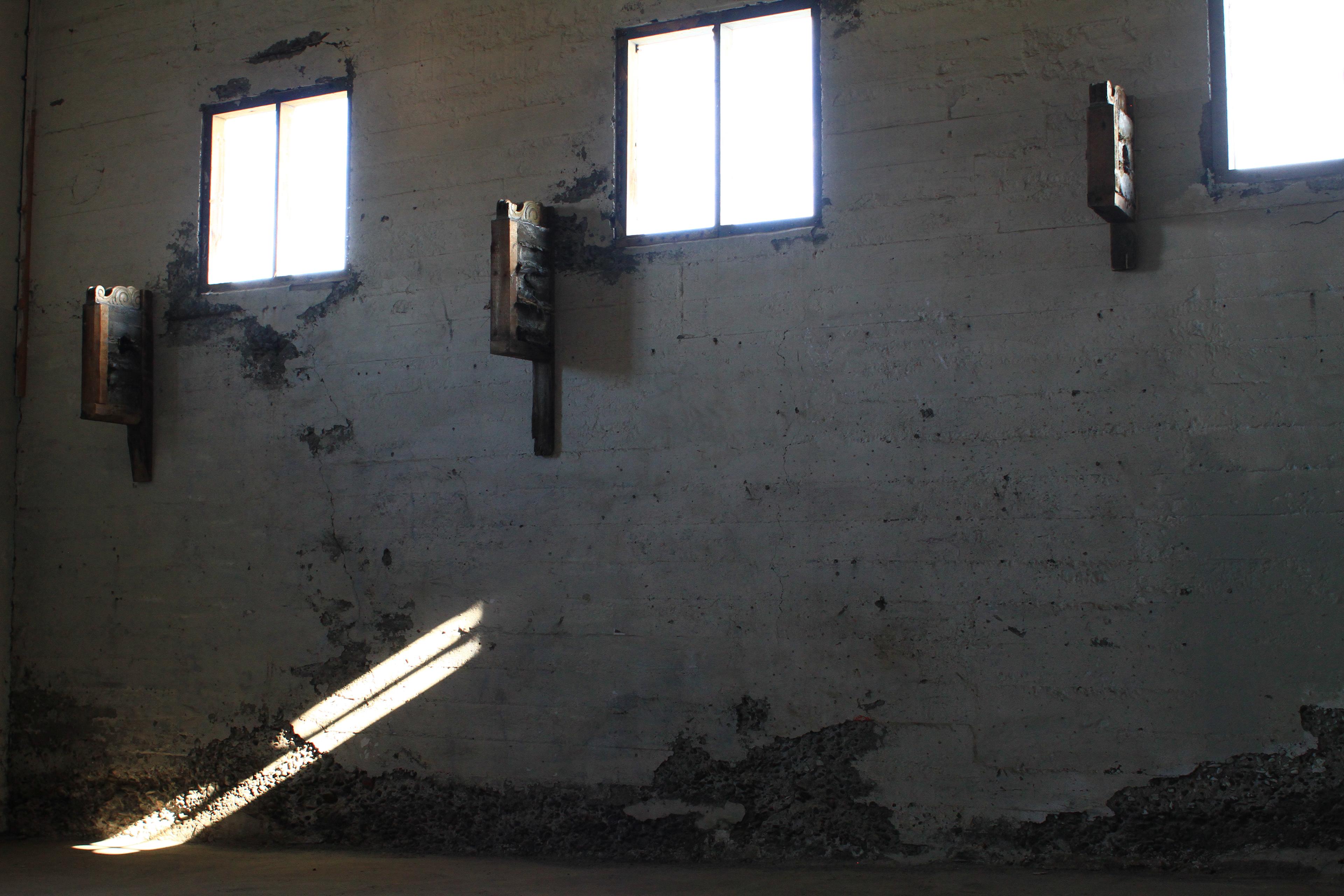






















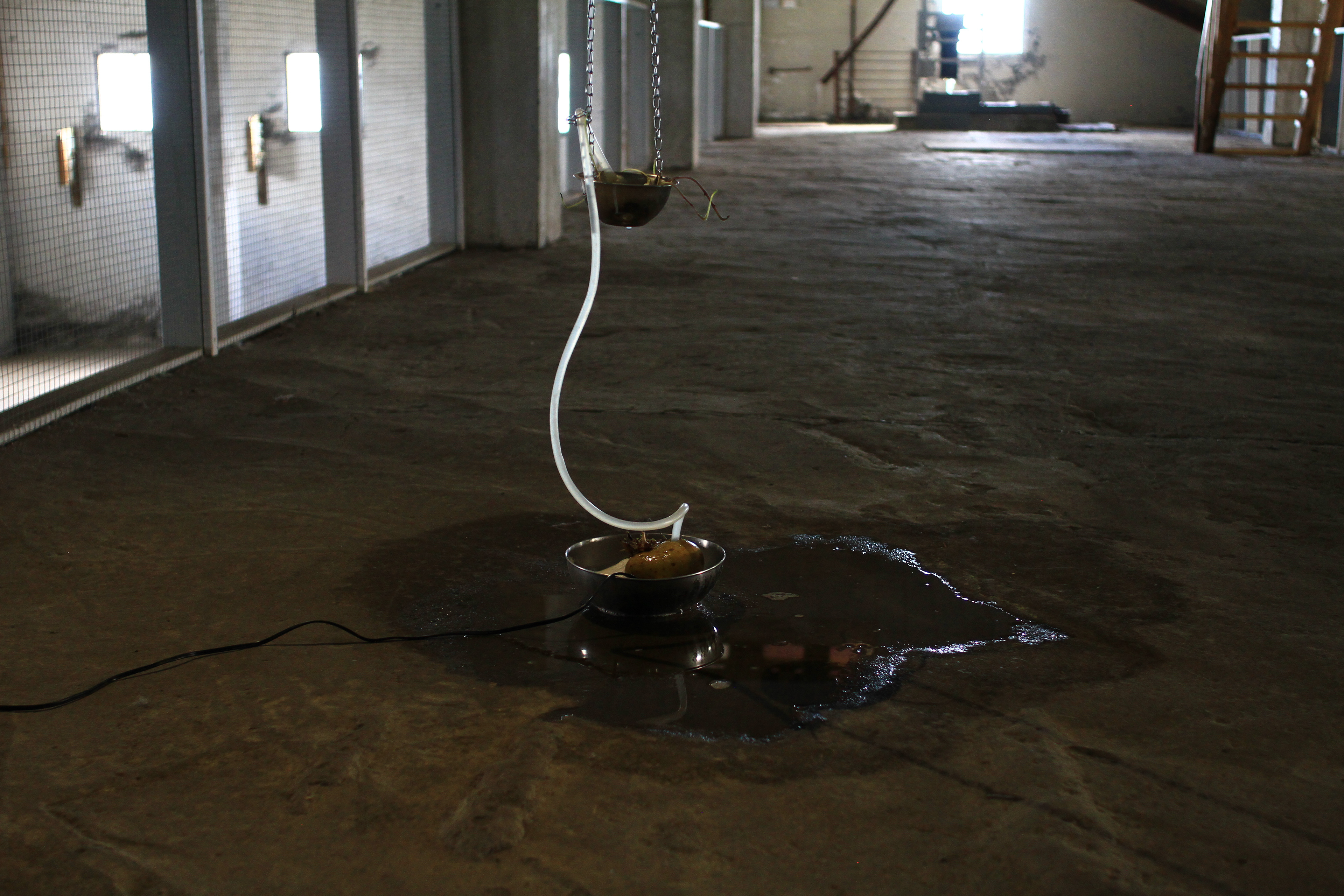










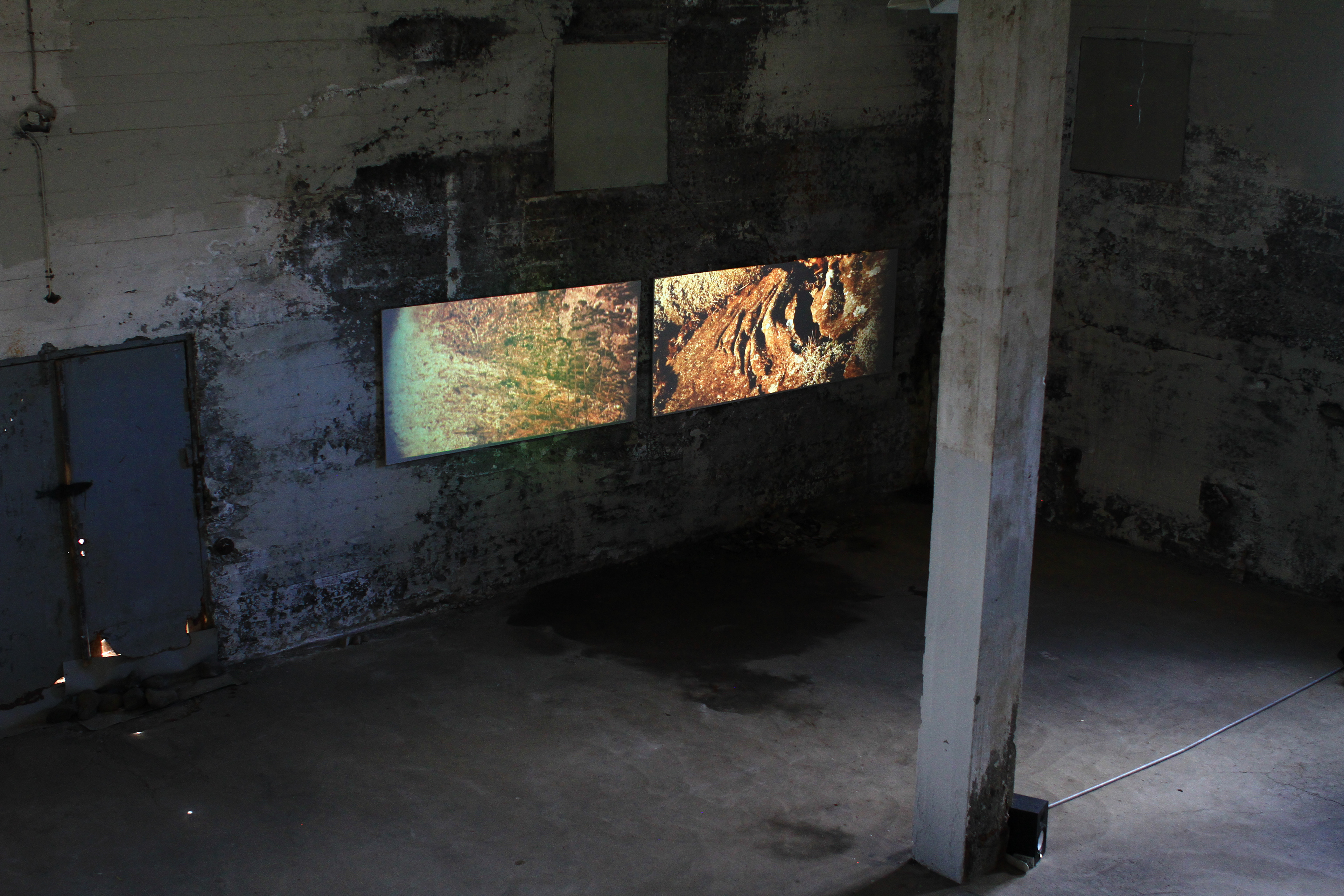
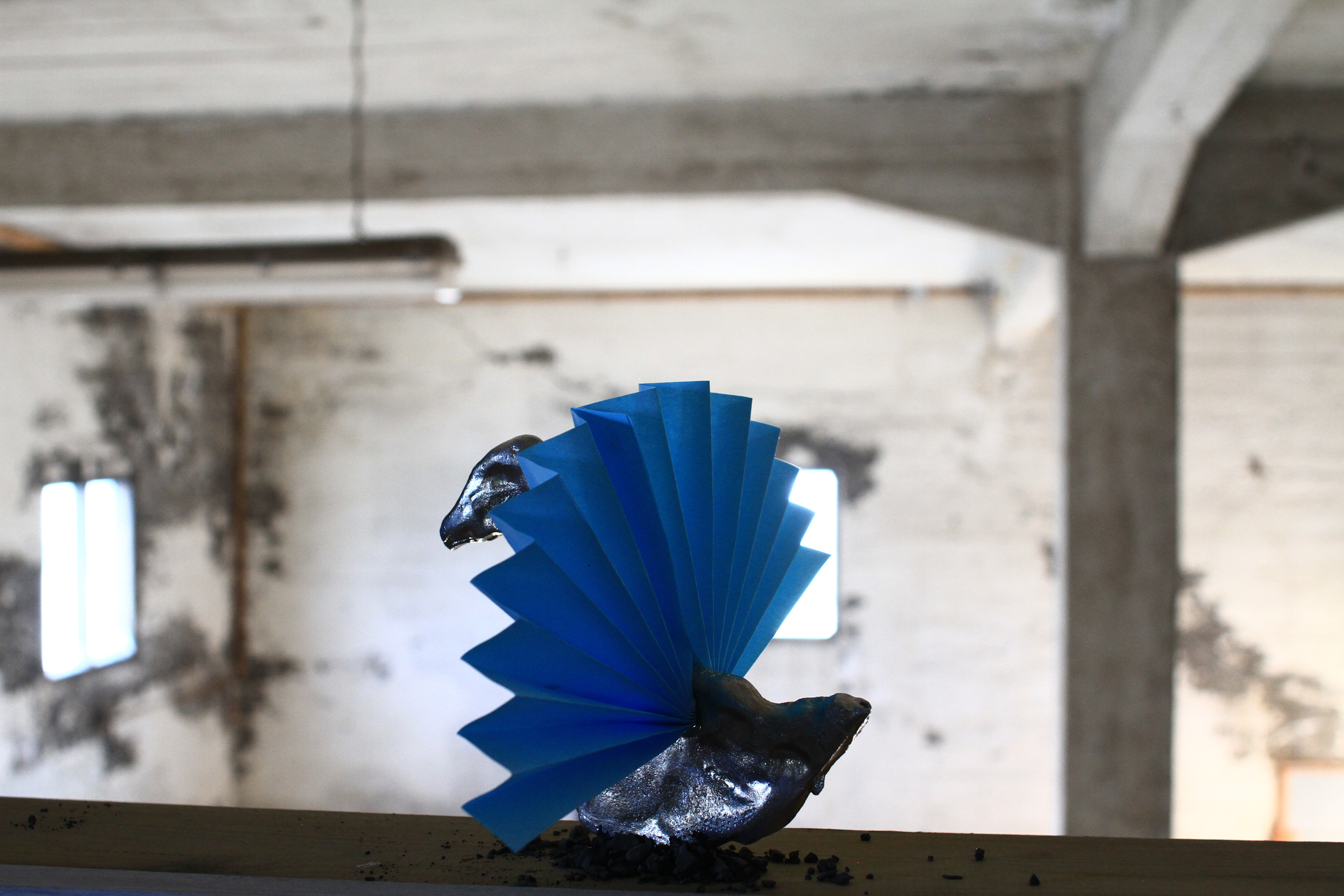
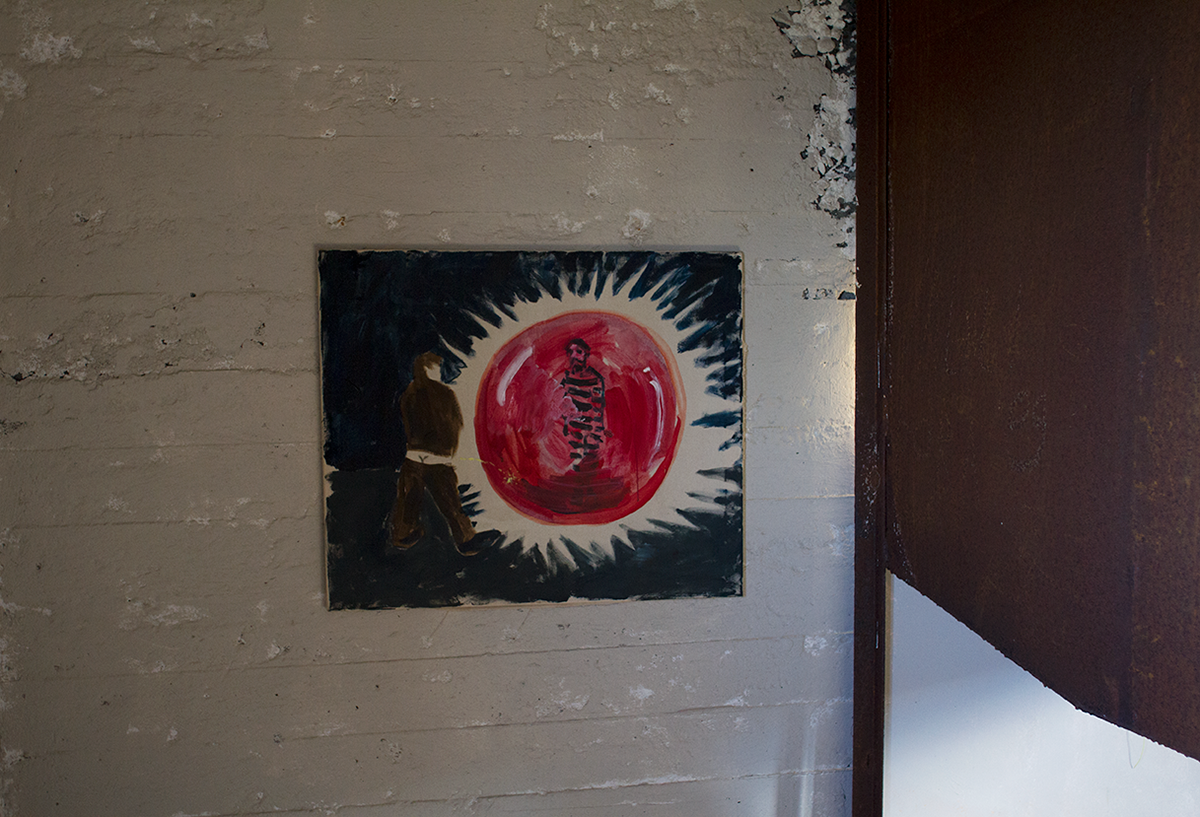

















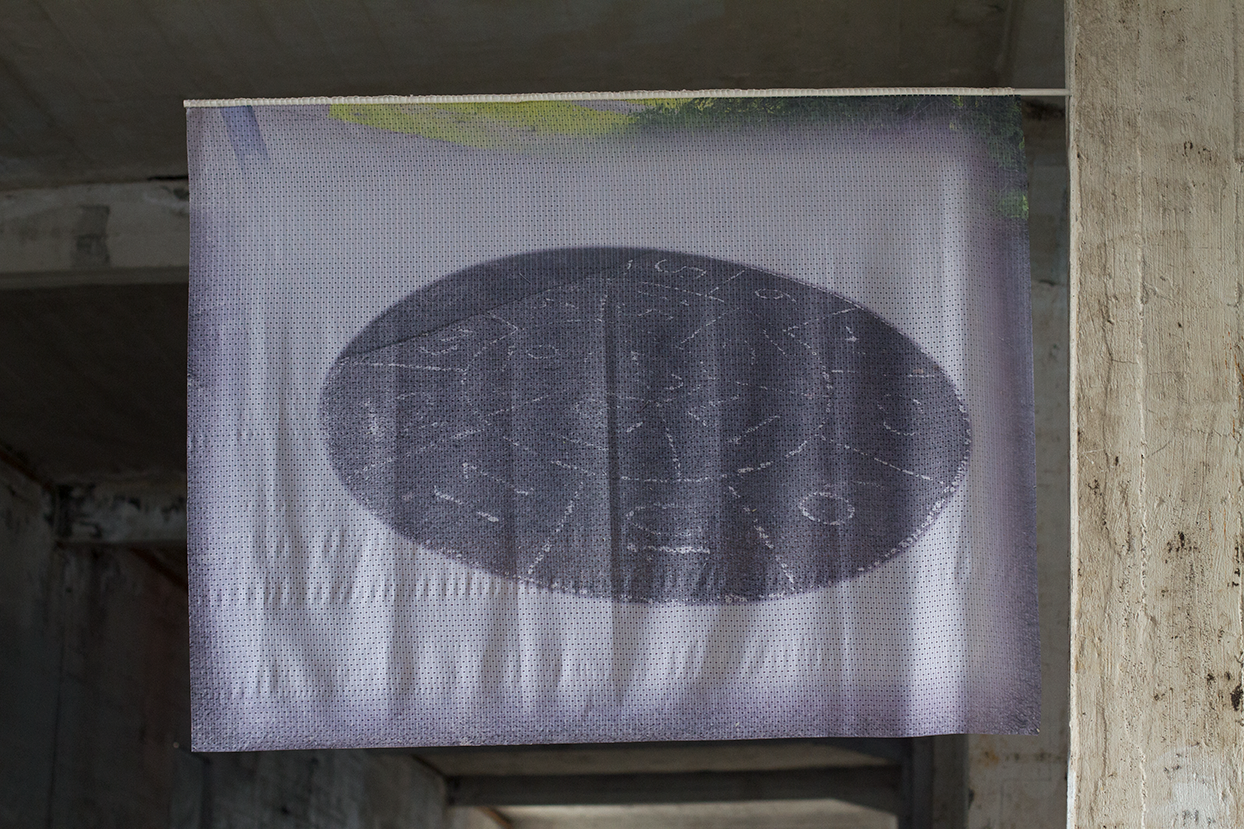




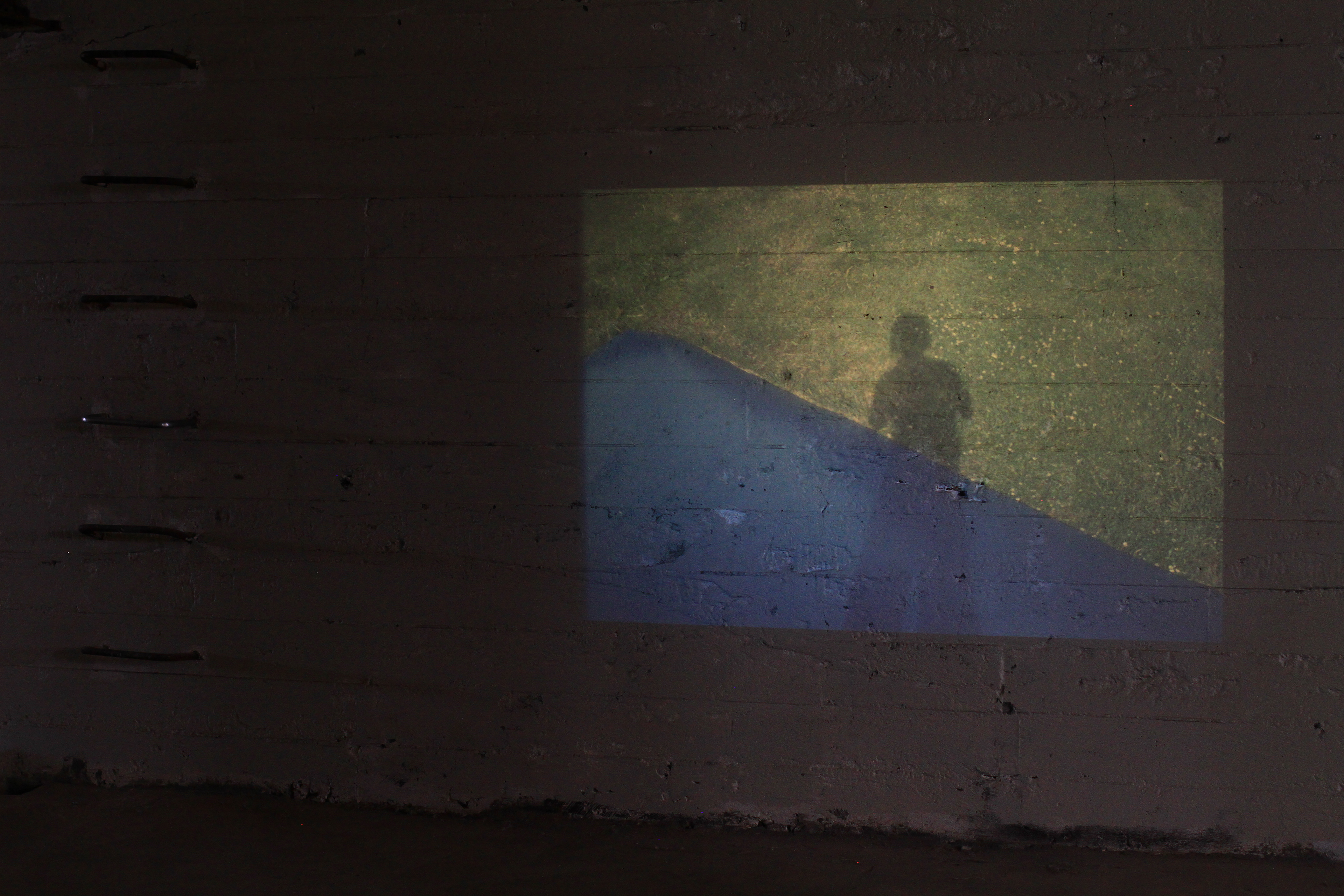
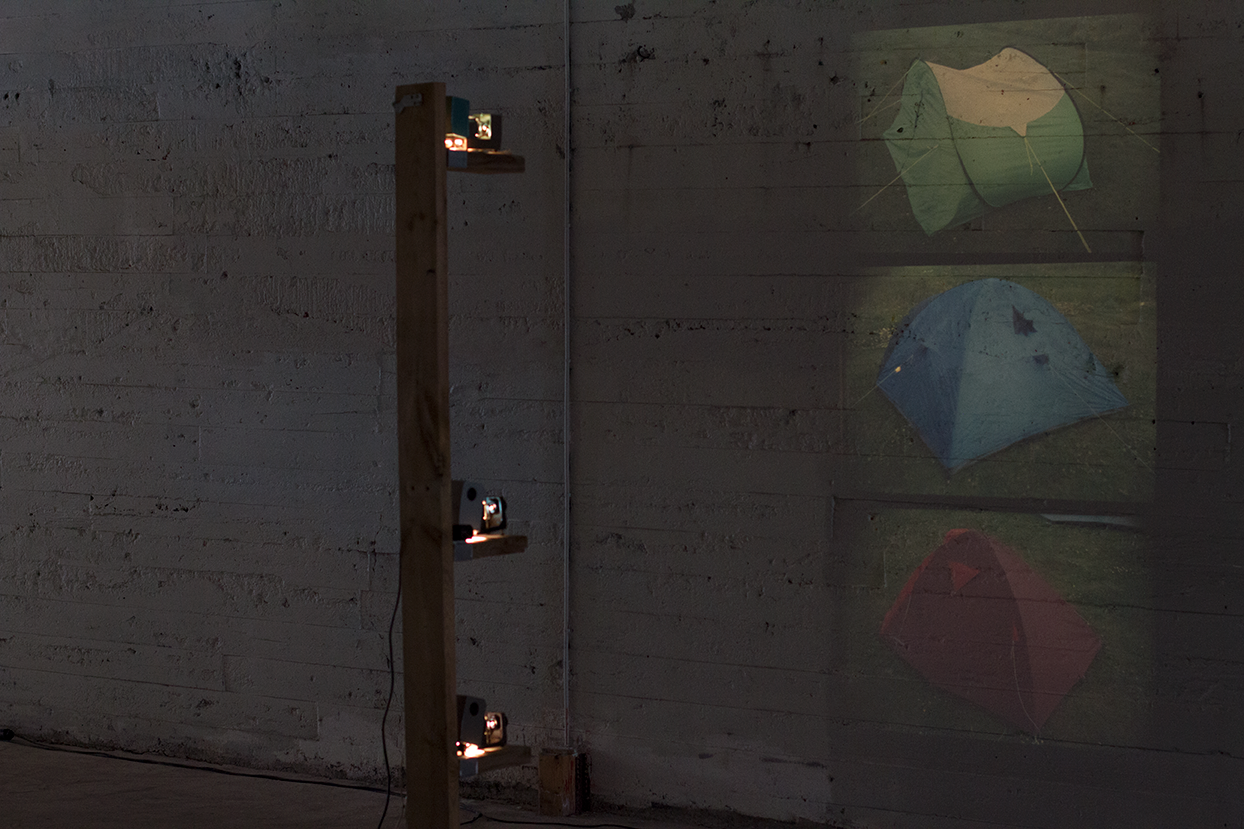









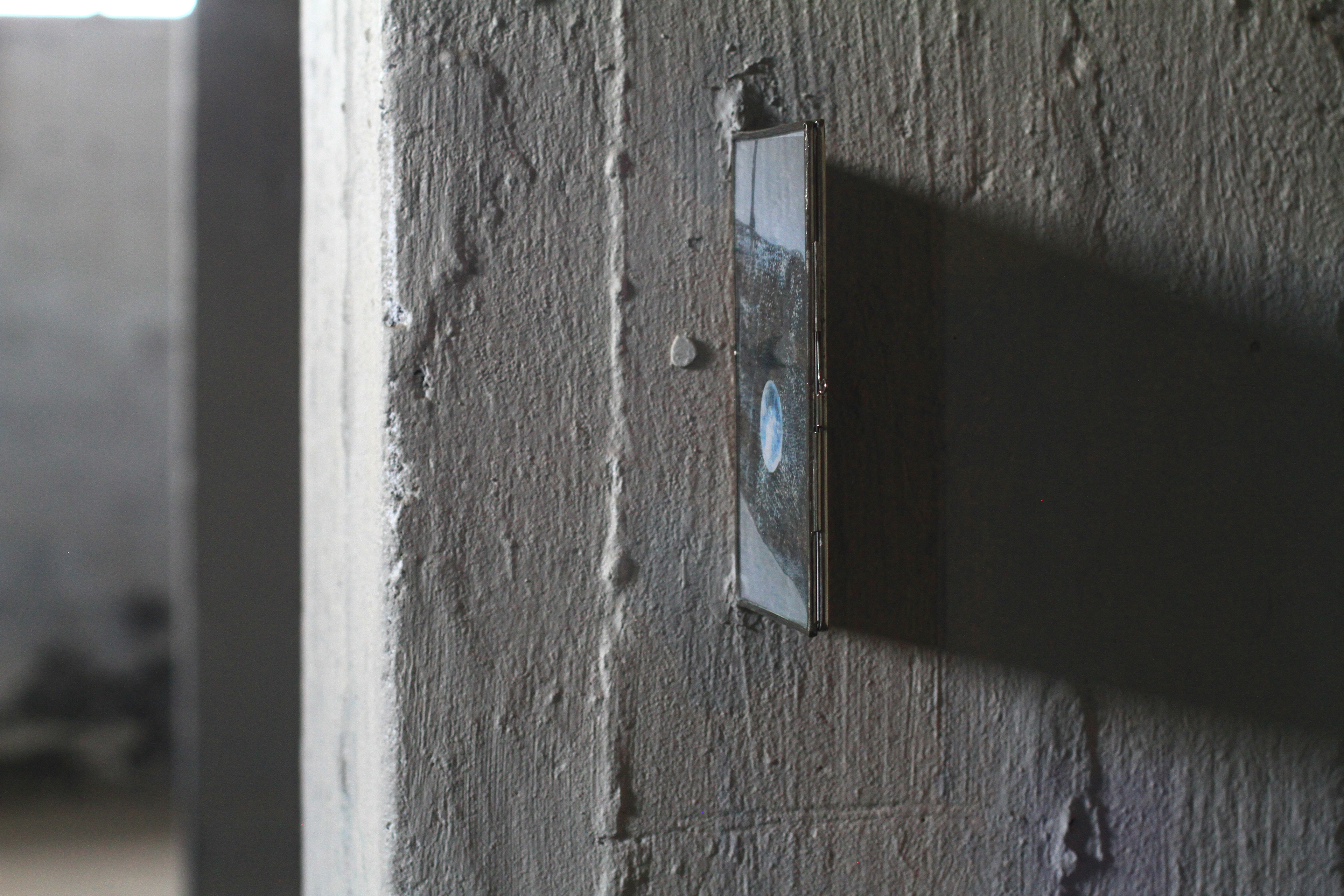




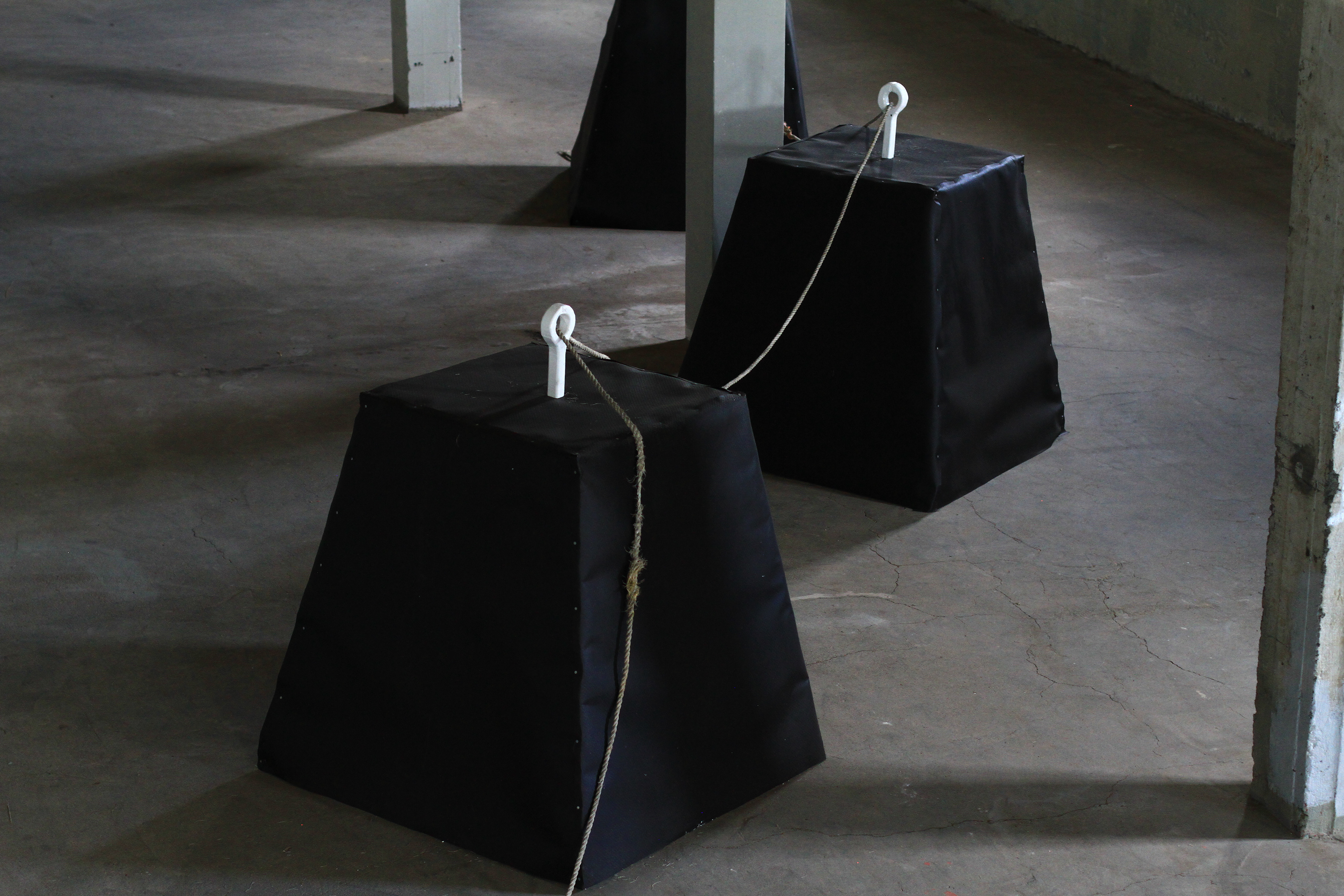



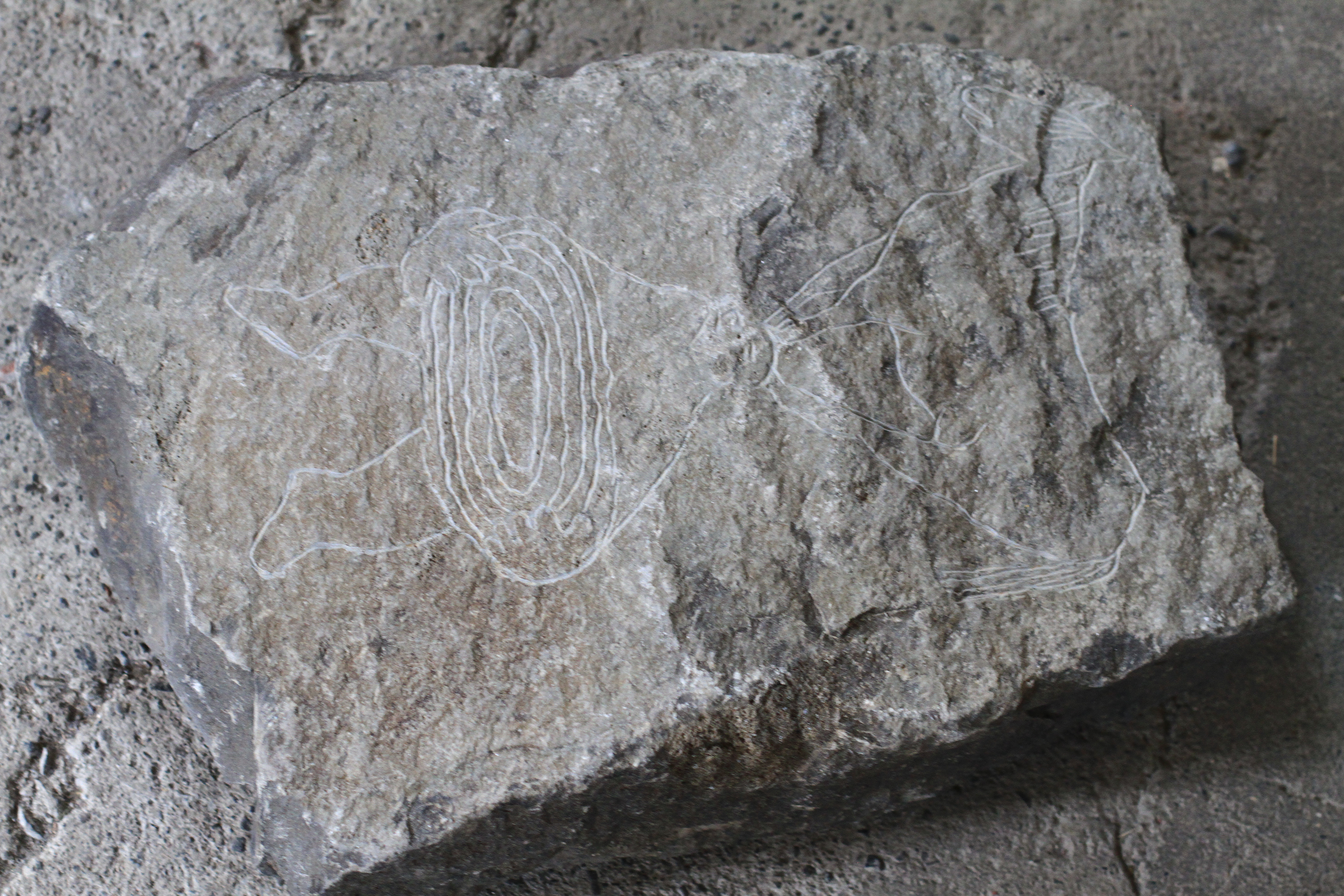
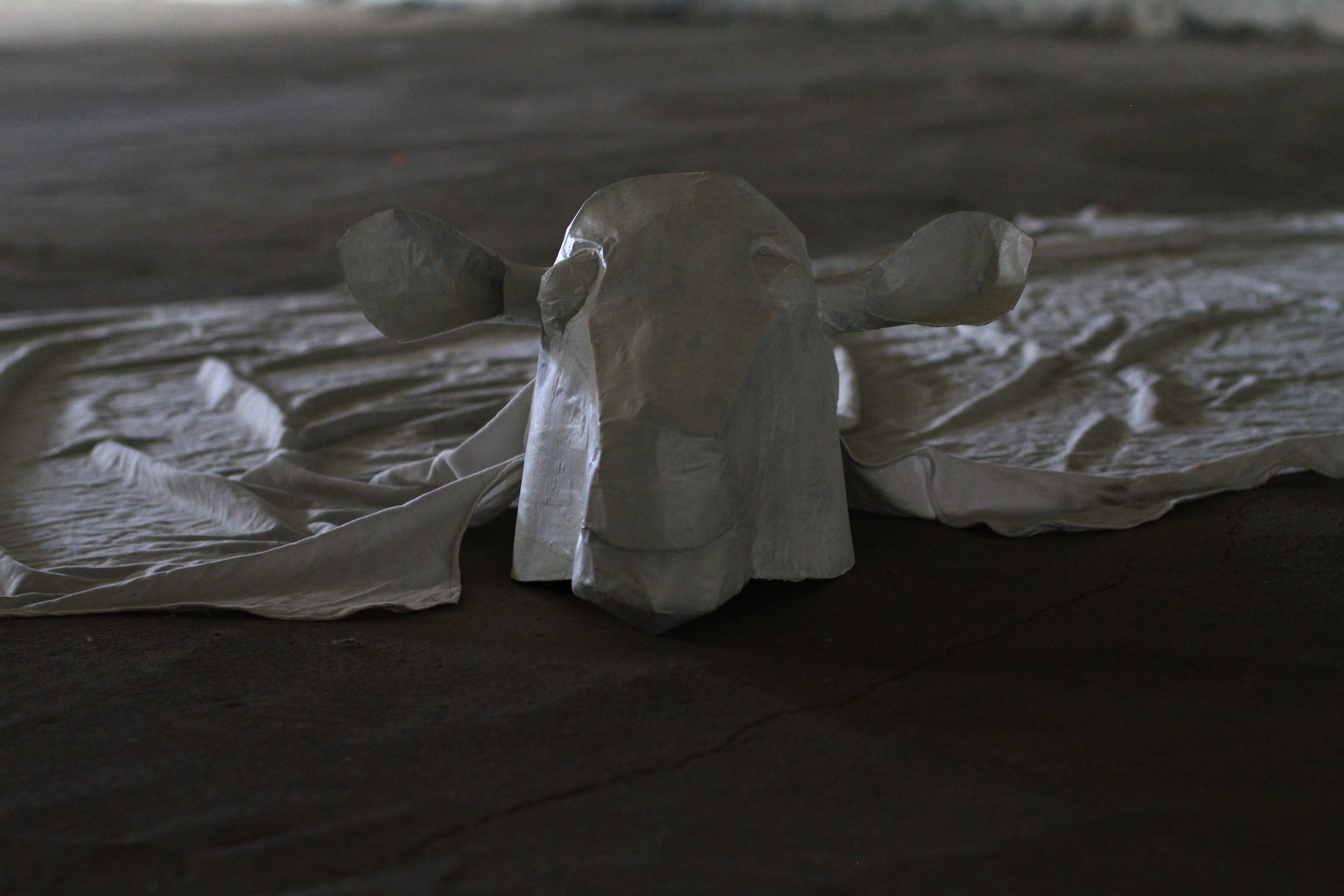


Dig the poem – written as an exquisite corpse by this group of 18 artists; composed democratically (Althing style), by employing the stylings of the GREAT Parisian Dadaists – a surrealist game played by the likes of Duchamp, Toulouse-Lautrec, and Elsa von Freytag-Loringhoven. If you want to experience the most vital, interesting art scene – filled with conceptual artists, filmmakers, collage artists, painters, and poets – “The living Dada”, (high on the green muse) all you need to do is get in a time machine and go back to Paris France circa 1920… or maybe, (just maybe) you just jump into your car and drive to Hjalteyri, Iceland, where this group of young artists, (the majority of which have recently graduated from the undergraduate fine arts program of LHÍ) have embarked on a radical art show brimming with absurdist poetic musings. Be sure your muffler is properly attached to your used car, and that your spare tire is in good working order – now fill the trunk with cases of beer draped in lopapeysur (but not too high to obscure your rearview) – who’s riding in the back middle seat?
The title of the show is the same as the poem: “Rúletta; Rúlluterta”.
Rúletta – As in a merciless game of risk – think the tragedy of The Deer Hunter – Robert De Niro with a gun to his head, Christoher Walken spewing blood from his temple. Dinero desperately trying to staunch the bleeding – Vilmos Zsigmond’s naturalistic cinematography never felt more haunting.
Rúlluterta – Meaning a traditional Scandinavian cake roll. The type your grandmother bakes. Now it’s being mass-produced, vacuum packed, and sold in Bónus. The kind of cake mechanics eat while taking a coffee break from fixing your beater car. The “Rúlluterta” as a visual metaphor for the sacred geometry found within Iceland's post industrial landscape – plastic wrapped hay bales – a rolled up mattress – concentric circles in sea shells found on the shores of Eyjafjörður.
The two words combined, “Rúletta/ Rúlluterta” meaning: a sugary-soft revolver, or a brutal grandmother – a cozy violence.
The show is helmed by Hrafnhildur Helgadóttir (B.1987). She currently manages the studio and archive of the late Icelandic conceptual artist Hreinn Friðfinnsson. Helgadóttir is an experimental artist who denounces the term of curator; considering instead “the systems of curating as a methodology”. Born in Reykjavik, she’s lived in Amsterdam since 2007, and graduated from Gerrit Rietveld Academie with a BFA in art where she later became a teacher. She describes the program as being the polar opposite of LHÍ given that there are no classes, and no points. Sign me up! She also co-founded the collective “Hard Core”, a conceptual curatorial collective that questions the marriage of art and technology. One project included developing code that turns a robot into a common enemy – prescient considering the art world's current obsession with their new “toy” A.I. (It’s worth mentioning that out of all the members of this show, none of them are utilizing the capabilities of artificial intelligence, even though most of them are all mixed-media artists.)
Out of the many jobs Helgadóttir worked, she was also a sous-chef at the Dutch design hot bed Hôtel Droog, housed in the original home of the Drapers’ Guild, where Rembrandt painted ‘The Staalmeesters’ a.k.a. ‘The Syndics of the Drapers' Guild’. (It just so happens to be the same painting seen on the wall in the opening scene of The Time Machine , dir: George Pal.) She also worked at the artist-run bookstore Boekie Woekie for books by artists in Amsterdam. Owned by artists Henriëtte van Egten, Jan Voss, and Rúna Thorkelsdóttir, Hrafnhildur would go there to “unlearn” what she learned at Rietveld Academy. Voss and Thorkelsdóttir own a house in Hjalteyri and Hrafnhildur was invited to stay with them on vacations and referred to these trips as “amazing”. This is how she first became aware of the Verksmiðjan gallery. Her grandfather also worked there when it was a Herring factory, so she feels a certain duty in representing the space. Her vision for curating this show takes the form of “facilitator”, and in one sense she’ll put her sous-chef skills to use by cooking the group lunch each day. By promoting the sacred practice of “breaking bread”, she creates a capacity for creative engagement. Given the fact that some of these artists’ had yet to decide on their works for this exhibition, and are waiting to be inspired by the space, cooking for them seems like a worthy initiative.
During these banquets in the gallery’s makeshift kitchen, she’ll be challenging them to think about the installation of their works for the show. More importantly, she sees the exhibition as a bridge from their recent graduation, and explains how important it is for them to disconnect from their school’s ideology. Afterall, those jocular memes based on their personas, and posted on IG’s “Contemporary Fine Ahhhh memes” page, (run by an anonymous LHÍ student) have all but ceased to exist. In all seriousness, Helgadóttir ponders what options they have now that they’ve been discharged into the Icelandic art world. She tells me that in Iceland, it's not about who is granted the next art career, rather it's who opens the next artist-run space. With Post-Dreifing losing their space to the city, (something about noise complaints from their exurban neighbors SMH) as well as the shuttering of King and Bong, their options seem bleaker than ever.
Given the fact that this show has the potential to establish these artists into the annals of Icelandic art history, I was interested to know what they were all planning, (now that they’ve been given free reign of Verksmiðjan). I first spoke to Axel Gústavsson, who is one of the driving forces behind the show, considering he grew up in Hjalteyri, and is the only child of gallery owner Gústav Bollason. Last year, as preparation for this show, Axel invited a majority of the artists to stay in the gallery space. This group is really tight-knit, with Ævar Uggason describing it as “a small village with no cliques”. In fact, when they first entered school, it was during the height of the pandemic, and the whole class was made to isolate together. This might explain the classes' impenetrable bond. Although Axel feels biased toward the space, he spoke with me about his memories of the gallery from his childhood. He used to be a gallery sitter here, and recounts a show with The Dieter Roth Academy in which they threw a party and built a bar for the occasion. It was the first time he remembers witnessing adults truly drunk, and it terrified him. It seemed to him like a commercial that was showing on T.V. at the time. Titled Don’t Drink like a Pig, it was produced by Vínbúðin, and promoted the merits of drinking responsibly. The ad campaign featured bar patrons overindulging in alcohol, who then morph into human swines. He says it was like a Matthew Barney video, but more horrifying.
Axel goes on to tell me that the factory is supposedly haunted, and that when it was being built, one of the workers died while working their shift. Urban legend has it that the worker haunts the gallery in the form of detached rubber boots, wandering the space at night. Sometimes you can hear the boots squeaking, other times you see wet boot-prints on the concrete floors. Axel’s interest in the supernatural is a connecting theme in his work, and last month he visited Viðey to shoot a video outside the home of modernist poet Steinn Steinarr. Story has it that Steinn suffered from insomnia due to a ghost haunting him. A priest was called in and an exorcism was performed. The malevolent spirit was bound to a chair in the corner of the home, with a line of chalk drawn around it so that the ghost couldn't cross it. After this, Steinn didn’t have any problems sleeping. For this show Axel recreated aspects of the story via his signature use of the anti-aesthetic. In his video, the ghost has a bag on his head, and he describes it as “kind of stupid”.
Other artists voice their works in a more cryptic fashion. Poets like Ráðhildur Ólafsdóttir evoke such images as the natural elements – water as a mentor, the sinewy inner world. Kata Jóhannesdóttir is nostalgic for the pastoral asphalts of her lost childhood.
Others are interested in the perception of time, whether through Quinten Vermeulen’s impossible task of distilling his artist archive down to a single large format photograph, or per Ívar Hlynsson’s two week long photo exposure of an unnamed fjord on concrete plates placed in wooden frames on the seas
Ævar Uggason describes his artworks in truly formalist terminology, all the while asserting the totality of a circles’ form. In order to convey this message, he’ll “draw” a circle with a boat in the ocean (until the vessel runs out of gas of course.)
Gabriel Waltersson (the one true structuralist of the group) will create atmospheric designs involving televisual smoke machine effects, manifesting a sense of useless engineering.
The sculptors seek to unfreeze the entire genre altogether. Hekla Guðrúnardóttir deconstructs a grand piano as a way to examine the resonance of certain metals, her sculptures as: the visible invisible. Íris Eva Magnúsdóttir will sew a soft sculpture with fluffy filling. Her textiles are veils of truth, with a profound tension between figurative and abstract
Painter/poet Elín Einarsdóttir embraces such practices as personalized-portraiture, and site specific plein air painting – her poetry is a landscape. Úlfur Logason is a classical expressionist who paints the mythological in his bedroom while listening to digital Classical Antiquity books – Lúðvík Vífill Arason depicts the transient spaces of futures’
The video installation artists of the group plan on screening multi channel video vignettes. One is of a Slovakian dog who becomes a new member of the artist's family. Shot on 16mm, he fetches a stick and pisses for the camera like a trained actor. For Bjartur Ragnarsson, this is the image of happiness. If the audience doesn't see happiness in the picture they can link it to his other projection of a volcanic flow; stone ocean surf. Alda Ægisdottir screens a lopping excerpt from her recent claymation Soulmates, about mythological star-crossed fraternal twins. (It’s worth noting that the film won the Award for Best Experimental Short at this year's Stockfish film festival.)
The performance artists are keen on approaching their art as a game of sport. Tómas van Oosterhout presents a set of rules that act as improvisational guidelines. He affirms that an undeniable freedom can be found therein. Katla Gunnarsdóttir is planning on presenting a ball game she created. She’s fascinated with cooperation simply because she enjoys the process of collaborating with other people. She believes “art is more about having fun” than it is about creating a masterwork. Saga Líf Sigþórsdóttir, first wanted to install a haunted house in the gallery (like the kind that are popular in America) but she settled on a round-the-clock live stream from Þjóðhátíð festival in Vestmannaeyjar. Donning camera glasses, she hopes the audience will experience the Dionysian nastiness right along with her.
Lastly, Ísabella Lilja has been working this summer as an ice cream van driver in the east. She knocks on doors in the middle of nowhere and asks the members of the home if they want to purchase ice cream, fish, or hamburgers. Business has been good, and she’s had “a lot of time to think” while she traverses the Icelandic countryside. But as of this writing, she has yet to decide on what she wants to exhibit. She plans on “showing up to the gallery and finding an idea once she arrives”.
Last week I spoke with Sigurður Karlsson who lives in Akureyri. I was curious to learn more about the supposed ghost of Verksmiðjan. Truth has it that Karlsson’s grandfather died in a work accident on July 1st, 1940, when he fell to his death from the highest roof of the factory. He was 60 years old. I imagine that at the funeral’s simple repast, fresh baked Rúlluterta was among the food that was served to the congregation.
Lee Lorenzo Lynch
Reykjavík, July 25th, 2024











